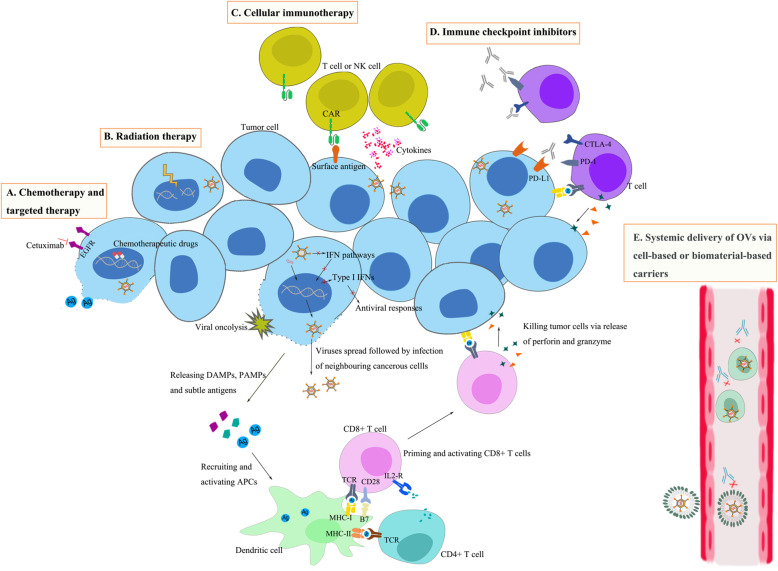Fig. 2.
Oncolytic virotherapy as a combined platform of cancer treatment. OVs replicate selectively in tumor and have the capacity for direct oncolysis. More importantly, OVs induce immunogenic death of tumors followed by elicitation of immune responses, thus mediating a broader range of long-lasting antitumor effects. These characteristics of OVs provide a favorable platform for combination therapy in cancer. a Cytotoxic chemotherapy and molecular targeted therapy destroy tumors by termination of gene transcription and protein synthesis, or interruption of aberrant signaling pathways. Dying tumor cells release soluble antigens, resulting in increased expansion of the neoantigen repertoires induced by OVs and enhanced antitumor immunity. b Some OVs serve as radiation sensitizers by interruption of DNA damage repair and potentiating the sensitization of tumors to radionuclide therapy or external beam radiotherapy. Radiation therapy promotes enhancement of viral oncolysis. c OVs shape the tumor environment for immune cell therapy by shifting the tumor status from “cold” to “hot”, thus, improving immune cell recruitment and effector function. d Viral infection leads to increased expression of immune checkpoint molecules such as PD-L1 and CTLA-4, which augments the expression of therapeutic targets required for ICB and sensitizes infected tumors to ICB. In addition, OV-mediated increases in the release of DAMPs, PAMPs and cytokines promote the accumulation of cytotoxic T cells at tumor beds and retention of their killing capability. e Development of carrier systems, including cell- or biomaterial-based delivery systems, for transport of OVs is expected to reduce the impact of antiviral immunity on virus activity. At the same time, the ability of OVs to reach physically inaccessible tumors can be improved by systemic administration under the protection of carriers

